Nowadays, wing clipping is a common practice among bird owners. It’s done primarily for safety and to prevent birds from flying away. However, this procedure can significantly impact the behavior of birds.
Before you go ahead and clip your bird’s wing, you must learn about bird behavior after wing clipping. It can reduce the ability to fly and confidence in birds. Wing clipping can make birds aggressive and clumsy as well.
Read on to explore the changes in bird behavior after wing clipping and examine the advantages and disadvantages of this practice. We will also discuss the process of wing clipping, and provide guidance on treating potential depression in birds.
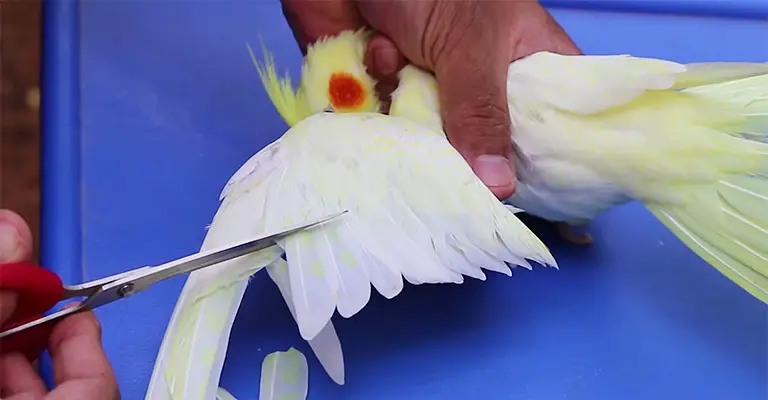
What Does Wing Clipping Mean?
Wing clipping is a procedure in which the primary flight feathers of a bird’s wings are trimmed or clipped to limit or prevent its ability to fly.
The primary flight feathers are the long, outer feathers on a bird’s wings that provide the necessary lift and maneuverability for sustained flight.
What Effects Brings In Birds Behavior After Wing Clipping?
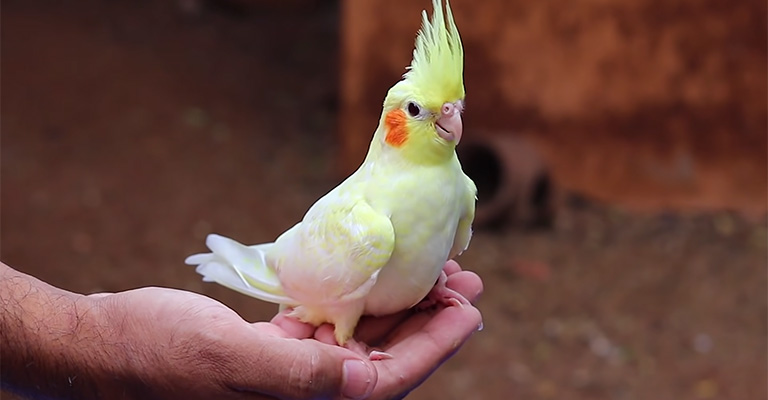
Wing clipping is where a bird’s primary flight feathers are trimmed to restrict its ability to fly. This procedure can have various effects on a bird’s behavior, both positive and negative.
Here are some effects that may be observed in a bird’s behavior after wing clipping, explained in points:
Limited Flight Ability
The most apparent effect of wing clipping is the restricted flight ability of the bird. Clipped wings prevent the bird from achieving full flight or flying long distances. This can lead to changes in their behavior as they adjust to their limited mobility.
Reduced Exploratory Behavior
Birds with clipped wings may exhibit less exploratory behavior. With limited flight capabilities, they may become less inclined to venture far from their immediate surroundings. This can result in a more sedentary lifestyle and decreased opportunities for environmental enrichment.
Increased Reliance on Climbing and Hopping
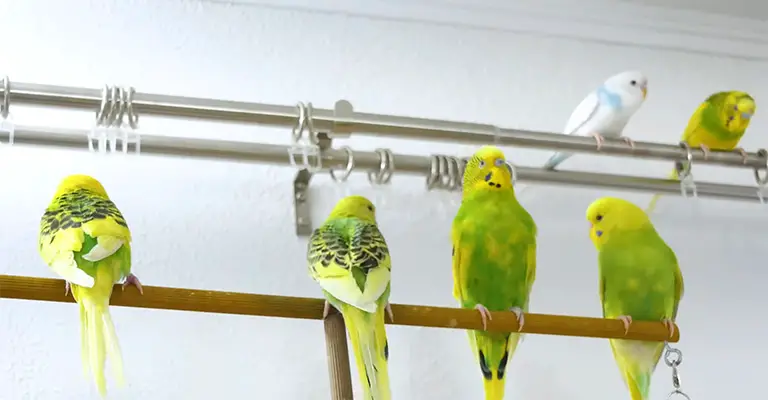
Without the ability to fly, birds may rely more on climbing and hopping to move around their environment. They may explore their surroundings by hopping from perch to perch or climbing on furniture and cage structures. This can result in changes in their movement patterns and behavior.
Increased Social Interaction
Clipped birds may engage in increased social interaction with their human caretakers or other birds in the household.
With limited flight, they may seek companionship and attention from their human companions or other birds in the flock. This can lead to a stronger bond between the bird and their caregivers.
Decreased Exercise Opportunities
With limited flight ability, clipped birds may have reduced opportunities for exercise. Flight is a natural form of exercise for birds, and the lack of it can lead to decreased physical activity.
This can contribute to potential health issues such as weight gain, muscle atrophy, and reduced cardiovascular fitness.
Potential Behavior Changes
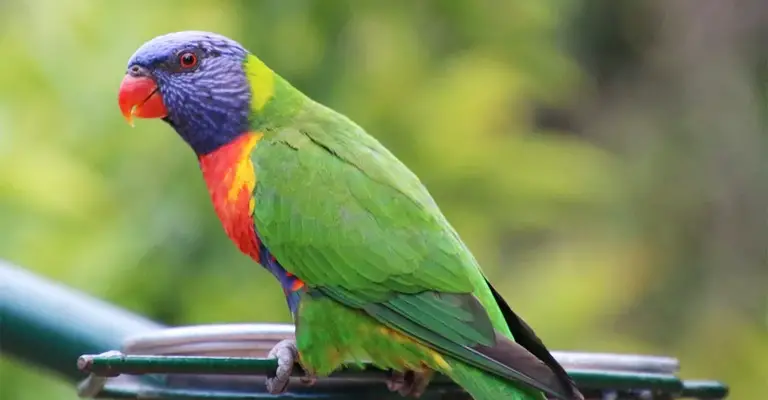
Some birds may exhibit behavioral changes after wing clipping. This can include increased vocalization, aggression, or frustration.
Birds may be frustrated or bored due to their limited ability to engage in natural behaviors like flying and exploring. Providing appropriate mental stimulation and environmental enrichment can help alleviate these behavior changes.
Increased Perch Time
Clipped birds may spend more time perched on available surfaces since they cannot fly or explore as freely. Providing various perching options with different textures and diameters can help promote foot health and comfort for the bird.
It’s important to note that the effects of wing clipping can vary from bird to bird. While some birds may adapt well to clipped wings, others may experience stress or behavior changes.
If wing clipping is performed, it should be done by an experienced professional, and consideration should be given to the bird’s needs and welfare.
Alternatively, allowing birds to exercise their natural flight abilities in a safe and controlled environment, such as supervised free-flight or flight training, is an alternative to wing clipping.
Advantages of Wing Clipping
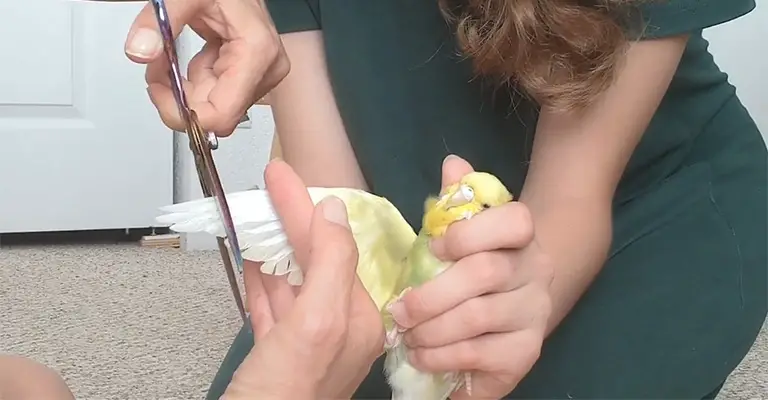
Wing clipping is a practice that involves trimming a bird’s primary flight feathers to restrict its ability to fly. While it is a controversial topic, some perceived advantages to wing clipping are often cited.
Here are some potential advantages of wing clipping, explained in points:
Safety
One of the main arguments for wing clipping is safety. Clipping a bird’s wings can prevent them from flying into dangerous situations, such as open doors or windows, ceiling fans, hot stoves, or other hazardous areas within the household. It reduces the risk of accidents and injuries during unsupervised flight.
Indoor Control
Wing clipping can be seen as controlling a bird’s movement indoors. It limits their ability to fly freely, allowing owners more control over their bird’s location and interactions. This can be particularly useful for birds prone to escaping or getting into unsafe situations indoors.
More accessible Training
Some owners believe wing clipping makes training more accessible. With restricted flight, the bird relies more on other means of movement, such as climbing or hopping.
This can make it easier for owners to manage and control the bird during training sessions, such as recall training or teaching desired behaviors.
Bonding and Socialization
Wing-clipped birds may depend more on their human caregivers for mobility and interaction. This could enhance the bond between the bird and its owner.
The bird may seek more social interaction, increasing opportunities for bonding and socialization with the owner and other household members.
Reduced Damage
Clipped wings can help prevent damage to household items, furniture, and walls caused by a bird’s flight. With restricted flight, the bird is less likely to crash into objects or knock things over accidentally. This can minimize the need for repairs or replacements and create a more bird-friendly living environment.
Travel Convenience:
For owners who frequently travel with their birds, wing clipping can provide convenience and peace of mind. It can reduce the risk of escape during transportation and make it easier to manage the bird in unfamiliar environments, such as hotels or temporary accommodations.
Disadvantages of Wing Clipping
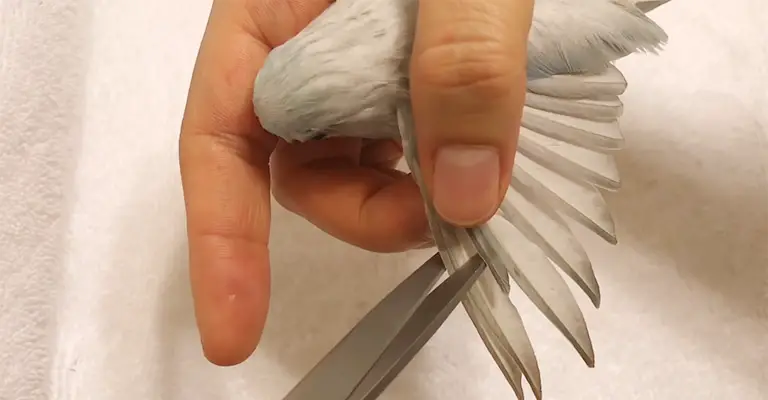
Wing clipping is a practice that involves trimming a bird’s primary flight feathers to restrict its ability to fly. While some people see advantages in wing clipping, several disadvantages and potential negative consequences are associated with this practice.
Here are some of the disadvantages of wing clipping, explained in points:
Loss of Natural Behavior
Wing clipping deprives birds of their natural ability to fly, an essential behavior for their physical and mental well-being. Flight allows birds to exercise their muscles, maintain cardiovascular fitness, explore their environment, and exhibit natural behaviors such as foraging and socializing in the air. Removing this ability can lead to frustration, boredom, and a decreased quality of life for the bird.
Increased Stress and Anxiety
Clipping a bird’s wings can cause stress and anxiety. Birds are naturally adapted for flight, and restricting this ability can disrupt their sense of security and control.
The loss of flight can lead to increased stress levels, which may manifest as behavioral issues, such as aggression, excessive vocalization, or feather picking.
Reduced Physical and Mental Stimulation:
Flight is a form of exercise that helps keep birds physically fit and mentally stimulated. Without the ability to fly, birds may have limited exercise and mental enrichment opportunities. This can result in muscle atrophy, weight gain, and behavioral problems caused by boredom and frustration.
Decreased Ability to Escape Danger
While wing clipping is often done to enhance safety, it can reduce a bird’s ability to escape potential dangers. In the wild or even in a domestic setting, birds rely on flight to evade predators or escape hazardous situations. Wing-clipped birds may be more vulnerable and unable to protect themselves in emergencies.
Interference with Natural Movements and Perching:
Wing clipping alters a bird’s balance and coordination, affecting its ability to perform natural movements such as climbing, perching, and grooming.
This can lead to difficulties in navigating their environment, resulting in injuries from falls or inadequate foot health due to limited perching options.
Negative Impact on Bonding and Trust:
While some believe that wing clipping strengthens the bond between a bird and its owner, it can also negatively impact the relationship.
The loss of flight can lead to feelings of vulnerability and fear in the bird, potentially eroding trust and causing stress in their interactions with humans.
Potential for Incorrect Clipping:
Improper wing clipping can cause harm and pain to the bird. If not performed by a skilled professional, the procedure can result in uneven feather regrowth, broken blood feathers, or damage to the bird’s wings. It’s essential to have wing clipping performed by someone with experience and knowledge of avian anatomy.
FAQs
No, when performed correctly, wing clipping should not cause pain to the bird. It involves trimming feathers that do not have nerve endings.
It is highly recommended to have wing clipping performed by a trained avian professional or veterinarian to ensure the procedure is done safely and accurately.
Wing clipping is not permanent. The trimmed feathers will molt and regrow over time, restoring the bird’s ability to fly.
While wing clipping can be performed on most bird species, it is essential to consider the specific needs and flight capabilities of each species. Consult with an avian professional to determine the best approach for your bird.
Yes, there are alternative methods such as harness training or providing supervised flight time in a safe, enclosed space. These methods allow birds to maintain their flight abilities while minimizing the risk of escape.
Final Thoughts
That was all about bird behavior after wing clipping. As discussed, wing clipping is a practice that can significantly impact bird behavior.
While it offers some advantages, such as safety and training facilitation, it also carries potential disadvantages. It might result in the loss of natural behavior and psychological impact.
It is essential to consider the individual needs and welfare of the bird when deciding whether to clip its wings. If wing clipping is performed, providing a stimulating and supportive environment can help mitigate any negative effects on the bird’s well-being.